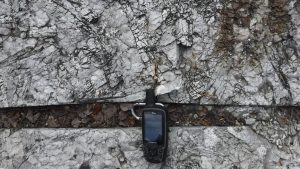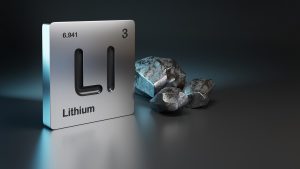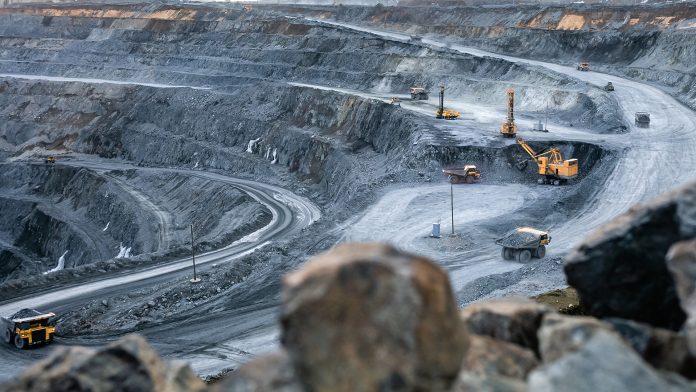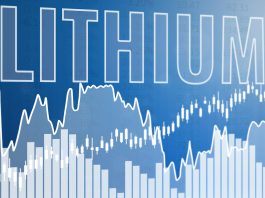Canadian junior exploration company Midex Resources is making great strides in the lithium mining land rush in Ontario.
Midex Resources Ltd. was an early mover in the 2020 lithium land rush, acquiring some of the most prospective lithium exploration ground available in the province of Ontario.
Midex is a privately held Canadian lithium junior exploration company, advancing rapidly towards a public listing on the TSX-V. Midex controls nearly 40,000 hectares of lithium-focused mining claims that sit directly on key geological control structures that are proven to host spodumene-rich pegmatites.
Advanced projects contiguous to Midex’s Berens and Crescent Lake projects continue to generate world-class results. Most notably are the Frontier Lithium Inc. (TSXV: FL) (FRA: HL2) (OTCQX: LITOF) PAK Project, which is reported to have the ability to produce 7,360 MT of lithium carbonate and 12,520 MT of lithium hydroxide annually, and the Green Technology Metals (GT Metals) (ASX: GT1) Seymour Lake Project. GT Metals recently reported, in accordance with JORC Code, a Mineral Resource Estimate of 9.9 Mt @ 1.04% Li2O (5.2Mt at 1.29% Li2O Indicated and 4.7 Mt at 0.76% Li2O Inferred) on the Seymour Project (ASX announcement dated 23 June 2022).
In addition, GT Metals announced its plans for ongoing metallurgical work, planning for bulk sampling and pilot testing. Additionally, in Q2-2023, GT Metals announced a strategic partnership with LG Energy Solution to capitalise on the lithium land rush, who invested A$20m at a 43% premium, validating the economics of the Seymour Lake Project, and positioning it to become Ontario’s frontrunner for spodumene production.
Midex Berens Project
Commencing in 2020, through an aggressive staking campaign, Midex acquired the largest land position in the Favourable Lake Greenstone belt, located 200km north of Red Lake, Ontario, and contiguous with the Frontier Lithium Inc. PAK Project. Despite the rich and diverse mineral endowment of the belt and the historic production at the Favourable Lake mine, the area has seen little exploration activity until recently through the lithium land rush.
Through a short prospecting programme, Midex located large areas of previously unknown pegmatite occurrences with locally highly anomalous Li2O values. An additional 36km of lithium-bearing pegmatites along the trend were also identified during the programme. A subsequent programme is planned to follow up the preliminary results and to carry out prospecting on local exposures of pegmatites exceeding 10m widths.

Midex Crescent Lake Project
In Q2-2023, Midex materially enhanced the company’s lithium portfolio with the acquisition of 100% of the Crescent Lake Project from Antler Gold Inc. (TSXV: ANTL). The Crescent Lake Project is directly on strike with GT Metals’ Seymour project and is located 250km north of Thunder Bay, Ontario.
The highest recorded historic drilling intercept on the Midex claims, to date, was 1.17% Li2O along a 49m core length drilled down dip on the L61W areas East Pegmatite. Surface channels from the 2016 programme returned up to 3.14% Li2O over 1.2m in the Chappais Pegmatite. Previous personnel reported spodumene crystals in the Chappais Pegmatite measuring up to 50cm in length. A 4m-wide section of the L61W areas East Pegmatite assayed 1.64% Li2O, 0.078% Ta2O5, 2,270 ppm rubidium, 418 ppm caesium, and 256 ppm beryllium, from surface channel samples. Four spodumene-rich pegmatites occur along the 8km trend extending northeast from the GT Metals Seymour project. These pegmatites have seen very little historic exploration, and the 8km trend is essentially unexplored. The advancement of the lithium land rush in Ontario is set to change this.
Over the remainder of 2023, Midex will focus exploration efforts on further delineating the existing known spodumene pegmatites, in addition to exploring for additional pegmatite occurrences.
The importance of junior exploration companies for the future of lithium production
Since Johan August’s first discovery of lithium in Stockholm two centuries ago, lithium has never in its history experienced the demand it is enjoying today. Lithium’s leap to the forefront of investors’ radars is staggering, and global policy is paving a long runway for market demand. The intense focus on this soft, floatable metal is arguably on par with a wartime spike in the need for steel production.

The surging demand for lithium, coupled with a severe supply deficit, is dramatically reconfiguring the traditional supply chain. The sector is moving towards a backward integration of the supply chain – an approach that closely mirrors the Henry Ford ‘all-under-one-roof’ model, which built the Ford empire a century ago. Automakers are now increasing their upstream investments and supply contracts to secure enough battery metals, like activities seen in the lithium land rush in Ontario. These actions will drive forward these companies’ electric vehicle (EV) production profiles to meet the decarbonisation targets set by governments globally.
The looming lithium supply deficit has substantially elevated and highlighted the importance of junior exploration companies and their critical role in delivering new lithium discoveries to meet demand and enable the global green transition. In addition to unprecedented demand for lithium, markets are just now beginning to experience unprecedented investment into lithium juniors. In 2013, there were 1,307 issuers on the TSX-V; 24 of which identified as lithium exploration companies. The total market cap of all issuers was $210,058,957, of which less than 2.0% represented lithium issuers. Fast forward a decade to Q2-2023, and there are 955 issuers on the TSX-V; 70 of which identify as lithium exploration companies. The total market cap of all issuers is $11,750,462,552, and 26% represents lithium issuers.
An historic shift: Advancing a lithium land rush
As automakers and battery manufacturers become increasingly desperate for battery metals, it is reasonable to expect a historic shift in the way junior exploration companies are valued.
The trending backward integration of supply chains is resulting in more funding flowing into mining for exploration and the development of new mining assets, and the optimisation of existing mining assets. As battery metal mining and refining processes mature and demand grows, direct partnerships between miners and end users will become far more common.

Asset quality and location, location, location
Midex has assembled one of the largest, highest quality, royalty-free lithium project portfolios in the lithium land rush area of Ontario, strategically positioned to leverage the future advantages Ontario will have in terms of concentrator, chemical plant, and transportation routes. There is no other location in North America – and few locations in the world – where a major automotive manufacturing ecosystem contains a major technology ecosystem, that is connected to a rich supply of raw materials to feed the entire ecosystem.
Please note, this article will also appear in the fifteenth edition of our quarterly publication.









